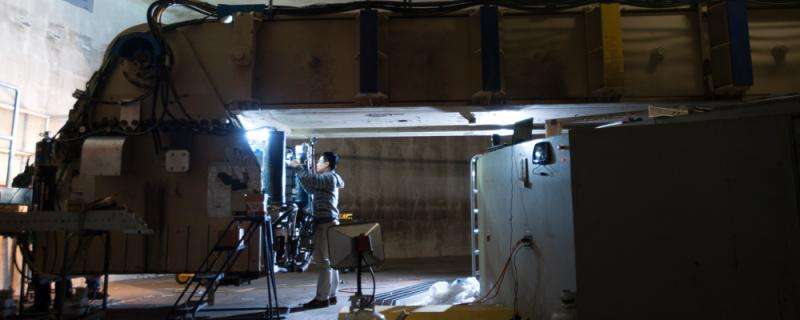Grant for natural hazards research at UC Davis centrifuge

The National Science Foundation will award almost $5 million over five years to UC Davis to include the large earthquake-simulating centrifuge at the Center for Geotechnical Modeling as part of the new Natural Hazards Engineering Research Infrastructure program.
The Center operates a nine-meter (30-foot) radius centrifuge with a shake table, the largest of its kind in the world. Researchers can build complex models of soils and structures on the shake table, fit them with instruments and sensors, and shake them while they rotate on this massive machine. This allows accurate scale-model studies of soils and soil-structure systems such as buildings and foundations, near-shore and off-shore energy infrastructure foundations, underground structures, pipelines, ground improvement technologies, wharves, embankment dams, and levee systems.
The grant will support research operations at the Center over the next five years, making it available to NSF-funded researchers nationwide as well as at UC Davis. The research performed will enable major advances in the ability of engineers to predict and improve the performance of soil and soil-structure systems affected by earthquake, wave, wind, and storm surge loadings.
The Center for Geotechnical Modeling, housed in the UC Davis Department of Civil and Environmental Engineering, has operated the large centrifuge as a unique, shared national resource for more than 30 years. The facilities have been used by researchers from the Universities of California (Davis, Berkeley, Los Angeles, San Diego, and Irvine), Colorado, Texas, and Washington; Oklahoma State; Arizona State; Oregon State; Virginia Tech; and Tokyo Institute of Technology, among others.
About NSF's Natural Hazards Engineering Research Infrastructure program
The NHERI program includes various shared-use research facilities that will replace the George E. Brown Jr. Network for Earthquake Engineering Simulation. From 2015 through 2019, NHERI will be a distributed, multiuser, national facility created to provide the natural hazards engineering community with access to research infrastructure (earthquake and wind engineering experimental facilities, cyberinfrastructure, computational modeling and simulation tools, and research data), coupled with education and community outreach activities.
Other facilities funded under the program include a "Wall of Wind" hurricane simulator at Florida International University, the tsunami wave flume at Oregon State University, and the large outdoor shake table at UC San Diego.
Provided by UC Davis